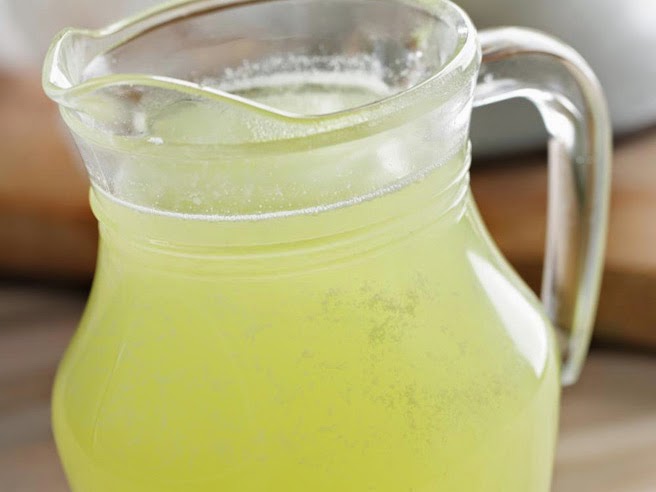Whey is much more suitable for human consumption than milk; its composition is much closer to mother’s milk, and there is a growing awareness regarding its benefits.

Thanks to the ads, we become fascinated by words such as essensis bifidus, probiotics and other magical sounding expressions, and we immediately feel that, as conscious buyers, we must purchase dozens of containers of these concoctions – there is nothing more important than health, right? In the meantime, we forget about the simple but effective, less expensive, curative whey that used to be well-known for centuries. Whey is not only is a drink that keeps away all winter ailments, but it is also great when used in cooking.
What is whey?
Whey is nothing more than a by-product of cheese production – even if this definition doesn’t sound too good. Despite, though, of how this definition sounds, whey is actually the most valuable part of milk, and this by-product would rather deserve to be called the gift of nature.
The slightly yellowish clear liquid that is separated during the cheese making process can also be obtained when making curd or cottage cheese. If you want to get whey quickly, slowly boil up some whole milk, and then squeeze in a few drops of lemon juice and strain the milk.
80% of the mineral substances in milk are actually stored in the whey; these include magnesium, zinc, iron, phosphorus, calcium, copper and selenium. Besides, whey has plenty of vitamins C, B and H, and it also contains valuable essential and non-essential amino acids, which are important for muscle development – this is the reason why muscle-enhancing drugs used by athletes contain whey protein. Whey is also recommended for persons on a diet, as whey not only helps to burn fat, but it also prevents the muscle tissue from breaking down.
Whey has a very good effect on depression as well. Every year, especially during the winter, it is recommended to have a 6-week whey cure, during which one needs to drink about 500-600 ml raw whey per day. By the end of the cure winter blues will disappear completely.
How to use whey
Our ancestors used whey in cooking and baking as well. During famines, many people were protected from a variety of diseases simply by drinking whey. The Eastern nations haven’t forgotten about the beneficial effects of whey, and they are still using it regularly. You can fully benefit of its positive effects if you drink whey raw. If you don’t find the yellowish liquid very palatable, you may use it in cooking – in this case, you may flavor it with a few drops of lemon juice.
You may purchase flavored whey drink in major shopping centers, grocery stores and health food stores. It is very similar to yoghurt drink, and after tasting it, you may decide to make it at home. By a simple process you can obtain a much more natural version that doesn’t contain any additives.
You can blend it with your favourite fruits, a little jam or syrup, honey and vanilla extract, and then chill it to obtain an excellent refreshing drink. You can also make whey sweetener: add sugar and cook the mixture over low heat until it reaches the density of honey. You can use this sweetener the same way you would use honey. You can also use whey to thicken sauces, but make sure to taste it before using it, as whey has a slightly sour taste
Rice and cereals can be cooked in whey instead of water. You can add it to dough when baking cakes or bread. In bread dough you can fully substitute water with whey; you will obtain tastier bread, and lighter cakes that may be stored for a longer time.
If you make sweet yeast dough for donuts, sweetbreads and so on, you can add 2-3 tablespoons of whey to the dough to make it lighter and softer. When making pastry, you can use whey instead of vinegar for a milder taste and a lighter texture.
If you can’t use up whey within a day or two, you don’t need to discard it. You may instead freeze it in the ice cube tray and use it later.
Homemade bread with whey
- 300 g white bread flour
- 200 g wholemeal rye flour
- 300 ml whey
- 2 tablespoons butter or fat
- 40 g fresh yeast
- 3 teaspoons sugar
- 2 teaspoons salt
- 1 teaspoon bread spice
Heat whey until lukewarm, mix in the sugar and crumble in the yeast. Wait until the yeast is activated. Meanwhile, sift the flour into a large bowl and add the remaining ingredients. Add the yeast mixture as well, stir the dough with a wooden spoon and then with an electric mixer. The dough is ready when it separates from the sides of the bowl and it is completely smooth and bubbles appear on its surface. Cover it with a clean tea towel and place the bowl in a warm, draft-free place. Wait for 45 minutes or until the dough doubles in size.
Sprinkle plenty of flour onto a wooden board and knead the dough well. Shape the loaves, place them on a lined baking tray, cover the loaves and allow them to rise for about 30-40 minutes. Preheat the oven, and bake the loaves at 180° C for 40-45 minutes. 5 to 10 minutes before the baking is done, brush some hot water onto the loaves. You will obtain light-textured bread that will stay fresh for several days.
Homemade ricotta
- 1 liter whey
- 330 ml, 3.5% fresh milk
- 1 teaspoon salt
Heat the whey to 30-35° C. Mix it with the salt, and then add the milk. Heat up the mixture to 85-90° C and then strain it through a clean tea towel or a piece of tightly woven gauze. Add spices to taste. You can serve the resulting cheese as horse d’oeuvre or use it in any recipe that requires ricotta or smooth cottage cheese.
Wellness drink with whey
- 300 ml whey
- Juice of 1 orange
- 1 ripe banana, sliced
- 2 tsp honey
- 1 tsp vanilla extract
Combine all ingredients in a blender. You may use other fruits as well.
